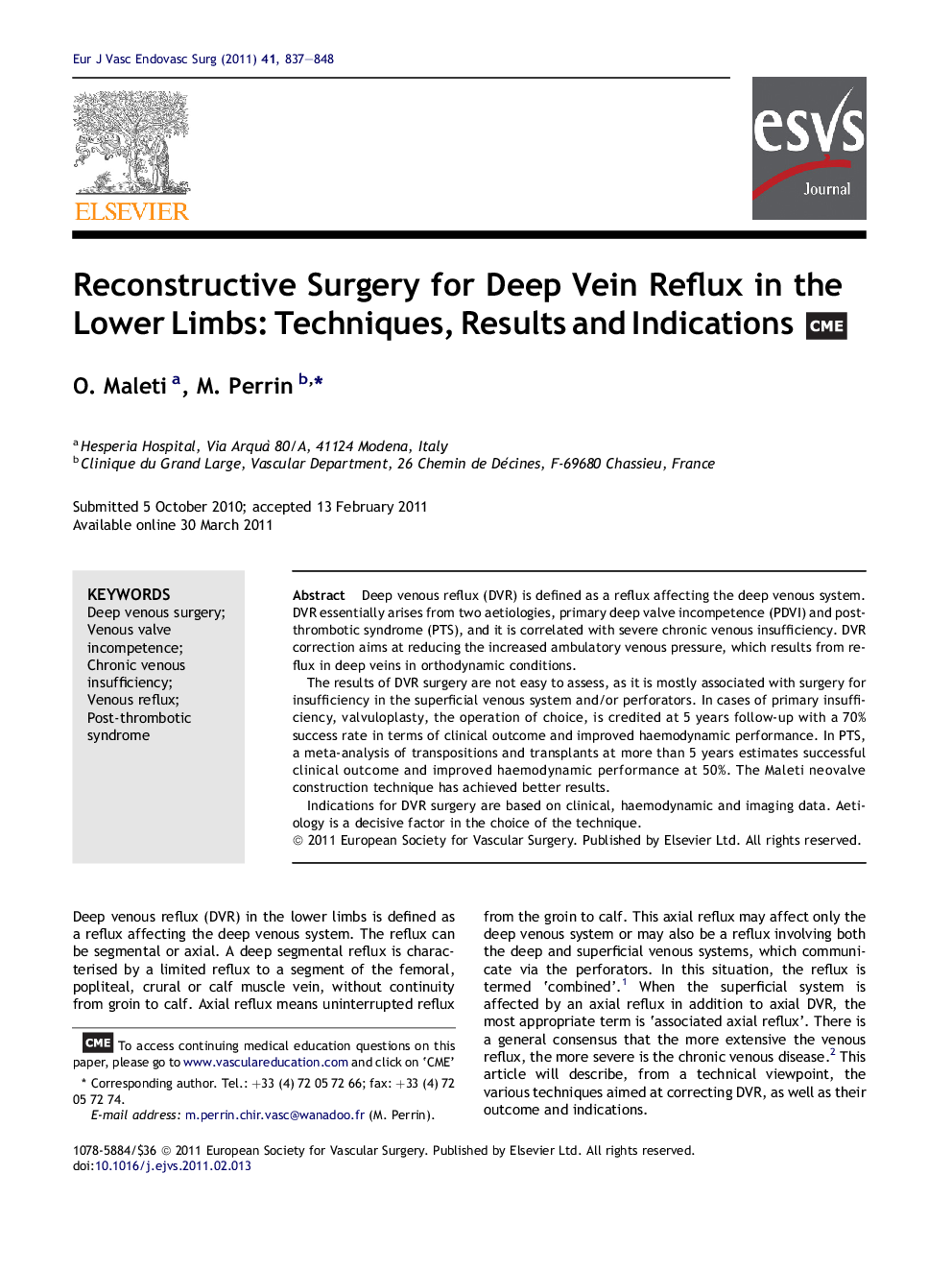| Article ID | Journal | Published Year | Pages | File Type |
|---|---|---|---|---|
| 2913332 | European Journal of Vascular and Endovascular Surgery | 2011 | 12 Pages |
Deep venous reflux (DVR) is defined as a reflux affecting the deep venous system. DVR essentially arises from two aetiologies, primary deep valve incompetence (PDVI) and post-thrombotic syndrome (PTS), and it is correlated with severe chronic venous insufficiency. DVR correction aims at reducing the increased ambulatory venous pressure, which results from reflux in deep veins in orthodynamic conditions.The results of DVR surgery are not easy to assess, as it is mostly associated with surgery for insufficiency in the superficial venous system and/or perforators. In cases of primary insufficiency, valvuloplasty, the operation of choice, is credited at 5 years follow-up with a 70% success rate in terms of clinical outcome and improved haemodynamic performance. In PTS, a meta-analysis of transpositions and transplants at more than 5 years estimates successful clinical outcome and improved haemodynamic performance at 50%. The Maleti neovalve construction technique has achieved better results.Indications for DVR surgery are based on clinical, haemodynamic and imaging data. Aetiology is a decisive factor in the choice of the technique.
